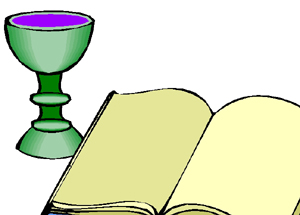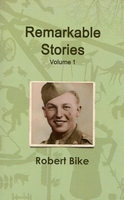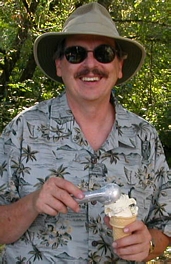
Robert
Bike
Licensed
Massage Therapy #5473
Eugene, Oregon
EFT-CC, EFT-ADV
Teaching Reiki Master
Life Coach
Gift Certificates
|
Reiki
Private classes. |
|
Member
OMTA & ABMP President of the Oregon Massage Therapists Association 2008-2010 & 2012-2013 |
|
I
graduated from Freeport (Illinois) High School. |
|
Please
help keep
this site free. Buy one of my books, on sale below. All sales go to help support this website. |
|
Remarkable
Stories, Remarkable
events have happened in Freeport and Stephenson County, Illinois,
and remarkable people have lived there. These are stories gathered
about people and events from 1835 through World War II. |
|
Biblical
Aromatherapy
by Robert Bike 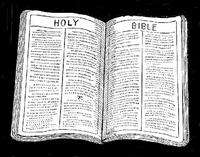
The Bible mentions about 232 plants by name, or closely enough to figure out what plant is meant. Of these, 24 are aromatic plants; that is, parts of the plants can be pressed or distilled to get an essential oil. Essential oils are the lifeblood of plants and have tremendous healing capabilities. The
healing power of plants is the basis for modern medicines.
Originally published in manuscript form in 1999, I completely revised the book and added illustrations. To order
Biblical Aromatherapy in paperback, List price $24.99; introductory offer $19.99 To order the pdf version and download to your computer or phone, The electronic version is only $2.99! |
Publicity!
|
Olga
Carlile, columnist for the Freeport (Illinois) Journal Standard,
featured this website in her column on January 19, 2007. |
|
Harriet
Gustason, another columnist for the Freeport Journal Standard,
has featured this website twice. Click to see pdf of articles:
June 29, 2012 November 3, 2012 |
|
"My
Life Purpose is to inspire my friends |
Robert Bike, LMT, LLC
The Class of 1866
Mary Clark moved to St. Louis, Missouri.
Clara DeForest married Mr. Burrell, and moved to New York City.
Isaac Fry became a druggist in Chicago.
W. W. Krape became a dentist in Freeport.
David S. Lasier became a grain dealer in Chicago.
Mary Mitchell married Mr. Neff, and lived in Freeport
Charles Brewster Schofield joined the army.
Mary
Stone, Aurora, Illinois.
Fred C. Winslow became a physician in Jacksonville, Illinois.
 Charles
Brewster Schofield was a Lieutenant Colonel in the United States Army.
Appointed from Illinois, he became a cadet at the United States Military
Academy on July 1, 1866. He was commissioned Second Lieutenant in the
2nd United States Cavalry on June 15, 1870. He made First Lieutenant on
June 14, 1879, and Regimental Adjutant from May 1, 1886 to January 17,
1889.
Charles
Brewster Schofield was a Lieutenant Colonel in the United States Army.
Appointed from Illinois, he became a cadet at the United States Military
Academy on July 1, 1866. He was commissioned Second Lieutenant in the
2nd United States Cavalry on June 15, 1870. He made First Lieutenant on
June 14, 1879, and Regimental Adjutant from May 1, 1886 to January 17,
1889.
Charles
Schofield made Captain on June 19, 1890, and attained the rank of Lieutenant
Colonel, Aide-de-Camp to Lieutenant General
John Schofield, his older brother, on February 8, 1895. Charles died
on February 2, 1901.
Charles Brewster Schofield was born on June 26, 1849, in Freeport, Illinois and graduated from Freeport High School in 1866. He followed in his highly successful older brother's footsteps. He graduated from West Point in 1870, and was sent on assignment to the West in the Indian Wars. He fought the Sioux and Nez Perce for six years.
His first field assignment was field duty at Fort Ellis, in Bozeman, Montana, where he was a Second Lieutenant. There he met a Miss Lilla Bogert, and was smitten by her.
By 1870 the Northern Pacific Railroad had surveyed all of its route across the northern plains except for the stretch between Bismarck, North Dakota, and Bozeman. Militant Lakotas, fearing the destruction of their hunting ground, threatened to resist the railroad. NPRR president J. Gregory Smith advised: "It will probably be unsafe to carry on the work between the Missouri River and Bozeman Pass without a proper military escort."
In November of 1870, Schofield was part of a troop surveying the route. They observed large herds of antelope, deer, elk, coyotes, buffalo and wild geese. The lush grass; the meandering, "clear as crystal" Yellowstone; and the box elder, cottonwood, and pine along its banks and on the hills dazzled them. They saw what is now known as Yellowstone National Park, among the first white people to ever view the area. They spotted a vein of coal in Montana that stretched for 300 miles.
Charles Schofield fought in the Indian campaigns from 1872 to 1876, including the Sioux Expedition of 1876. The following year he fought in the Nez Perce War.
His formative military experiences were of white settlers being killed by Sioux, and of white settlers killing Sioux. There were continuous skirmishes.
Schofield's
most dangerous encounter came in the Yellowstone Valley. It was necessary
to cross and re-cross the river several times. On one occasion Lieutenant
Schofield's horse lost his footing, and both man and horse disappeared
beneath the cold, rapidly moving waters. Finally, the horse regained his
footing and men rushed in to the rider's rescue. Schofield, who served
against the Sioux for years, was never nearer death than on that occasion.
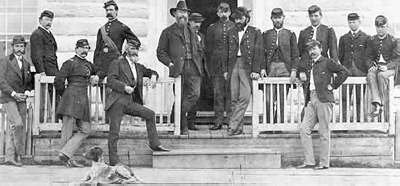 Second
Lieutenant Charles Brewster Schofield wrote to Lilla Bogert in the months
surrounding the Battle of the Little Big Horn. The Lilla Bogert Letters
in the Library at Montana State University contain six letters written
by Charles Schofield from the field from 1876-1877. The 1876 letters were
written while Schofield was on special assignment with the Second Cavalry.
Second
Lieutenant Charles Brewster Schofield wrote to Lilla Bogert in the months
surrounding the Battle of the Little Big Horn. The Lilla Bogert Letters
in the Library at Montana State University contain six letters written
by Charles Schofield from the field from 1876-1877. The 1876 letters were
written while Schofield was on special assignment with the Second Cavalry.
Schofield was with the "Montana Column" under Colonel John Gibson on the 1876 Sioux Campaign. The "Montana Column" was part of a pincer movement including General Crook from Fort Fetterman, and General Terry and Lt. Colonel George A. Custer from Fort Abraham Lincoln. The result was the Battle of the Little Big Horn.
Schofield tells Lilla of the conditions in the camps and his thoughts of Custer and other leaders, the Sioux, and the battle itself.
May 28, 1876, Camp on the Yellowstone River near the mouth of Rosebud Creek, Montana. Schofield tells Lilla of hostile Sioux conditions and about the three men who have been killed so far. He also comments on Gibson's lack of ability as a leader. He expects to leave within a couple hours, was planning to write his will, and was going to leave everything to Lilla.
June 14, 1876, Camp on the Yellowstone River near the mouth of Rosebud Creek. Just days before the battle, Schofield tells Lilla of meeting up with General Terry's steamboat of supplies and that Custer was on the other side of the river with the 7th Cavalry and four companies of infantry.
June
28, 1876, Camp on the Little Horn River, Southern Montana. Schofield writes
from the Custer Battlefield telling Lilla of Custer's death on June 25
and the deaths of Custer's 210 men. He comments on how Custer's entire
regiment would have also died had Schofield's party not arrived.
July 4, 1876, Camp on Yellowstone. Now safe from the Sioux, Schofield is able to write a lengthy letter explaining the details of the battle. He tells of first learning about Custer's death and meeting up with Colonel Reno's troops. He expresses his views of Custer and why he failed. They cared for the wounded and buried the dead before leaving for Fort Pease, Montana. Schofield had his 27th birthday on the Custer Battlefield.
July 18, 1876, Fort Pease. Almost a month after the battle, Schofield writes to Lilla from Fort Pease and tells her of the drunken condition of Major Thompson. They are waiting at the fort until reinforcements arrive. He is tired of fighting and wants to go home. He re-tells events witnessed by Colonel Smith who was at Fort Lincoln when the officer's wives heard the news of their husbands being killed in the battle. He tells of conditions at the Fort.
May 23, 1877, Camp on Rosebud. Schofield tells Lilla of the conditions of the camp and lack of decent food. He also writes of a scouting trip. There does not seem to be many Indians around after they "trashed" them.
Lilla's father, John V. Bogert, became the first mayor of Bozeman, Montana. Lilla and Charles never married. An accomplished western artist, Lilla is known for her paintings of Montana topics. She died in 1951 at age 103.
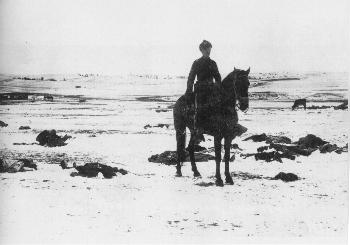 The
army's revenge for Custer was the massacre at Wounded Knee.
The
army's revenge for Custer was the massacre at Wounded Knee.
Schofield, who was not present during the massacre, but arrived in time to bury the dead, said in his report regarding the conduct of the soldiers: "The evidence shows that great care was taken by the officers and enlisted men to avoid unnecessary killing of Indian women and children in the affair at Wounded Knee, and shows that the conduct of the Seventh U.S. Cavalry under very trying circumstances was characterized by excellent discipline and in many cases by great forbearance." On December 28, 1890, 500 well-armed soldiers killed 300 unarmed Lakota; many were women and children. Some soldiers died, apparently the result of friendly fire.
From 1878 to 1895 Charles Brewster Schofield was the Aide-de-camp to Major General John Schofield, his brother. He was promoted to First Lieutenant in 1879.
In 1885 he returned to frontier duty at Fort Walla Walla in Washington.
In 1895 he was once again promoted, becoming a Lieutenant Colonel. He served in the Spanish-American War in 1898 and the following year was shipped to Cuba.
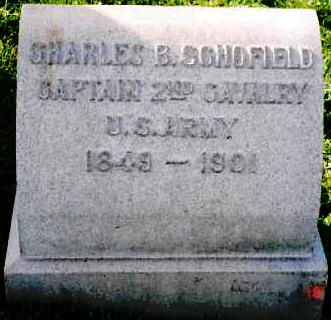 Schofield
died on February 1, 1901, at Matanzas, Cuba, of heart disease at the age
of 51. He is buried at Arlington National Cemetery.
Schofield
died on February 1, 1901, at Matanzas, Cuba, of heart disease at the age
of 51. He is buried at Arlington National Cemetery.
Charles Brewster Schofield never lived up to the exploits of his brother.
General John Schofield always seemed to be in the right place in Civil War battles, earned the Medal of Honor, was Secretary of War in President Johnson's Cabinet, taught at West Point, was Superintendent of West Point, served as Commander of the Army, wrote a book, and lived a long life.
Charles just missed the Battle of the Little Big Horn, arriving in time to bury the dead, missed the battle at Wounded Knee, arriving in time to bury the dead, served in the Spanish-American War in Cuba, and died young of disease.
